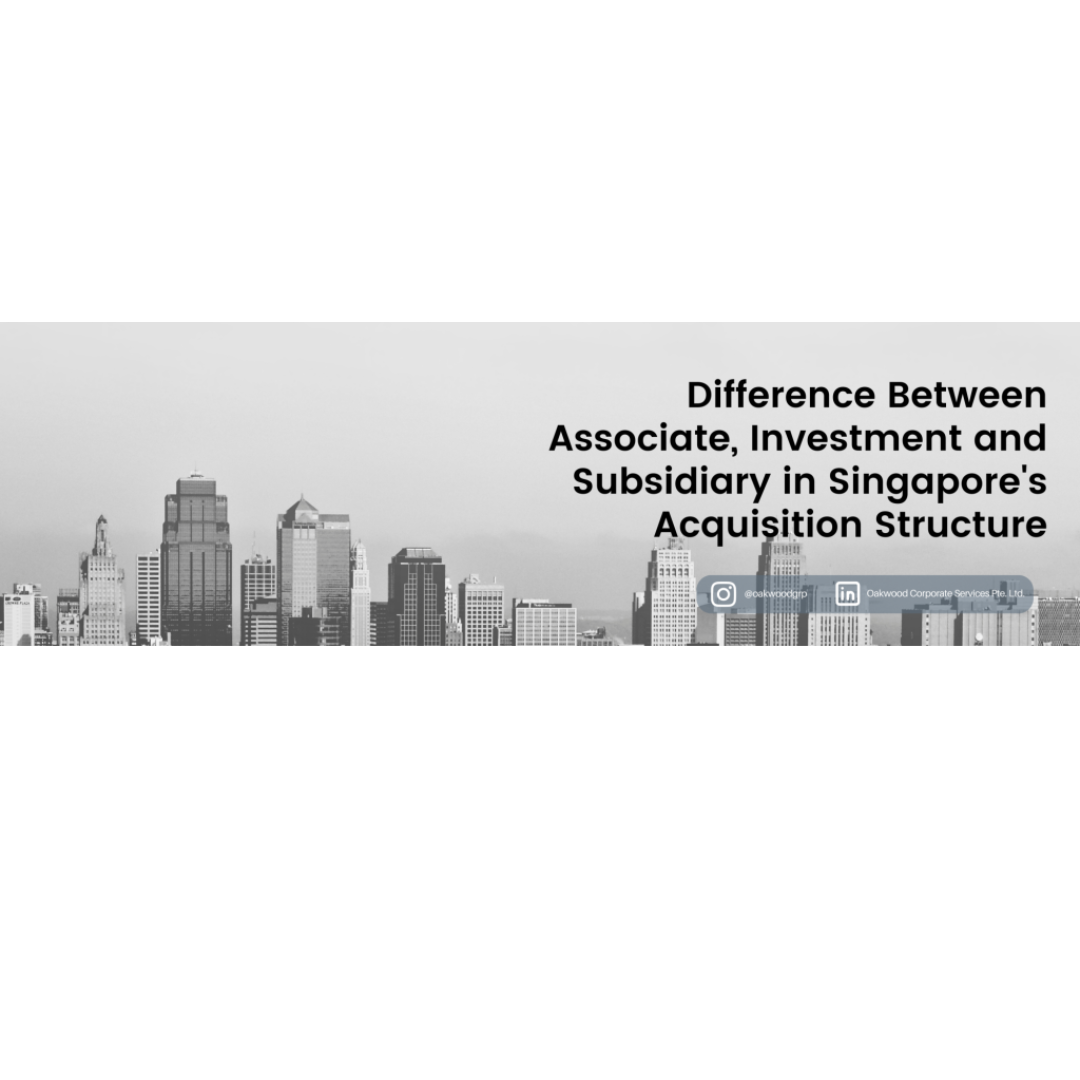
Difference Between Associate, Investment, and Subsidiary in Singapore’s Acquisition Structure
n Singapore, as in many other countries, companies often use various acquisition structures to expand their business operations or enter new markets. Foreign investors who invest in Singapore can set up a variety of business structures for their investments. Three commonly used acquisition structures in Singapore are associate, investment, and subsidiary. These structures differ in terms of ownership, control, and legal implications. Before settling on a company structure to operate from, investors must examine their individual business needs.

In this article, we will explore the differences between these three types of acquisition structures in Singapore.
1. Associate: An associate is a company in which the acquiring company has significant influence but not control. According to the Singapore Financial Reporting Standards (FRS), significant influence is the power to participate in the financial and operating policy decisions of the investee, but not control over those policies. Typically, significant influence is assumed to exist when the acquiring company owns 20% or more of the voting power of the investee.
In an associate structure, the acquiring company is usually a minority shareholder and does not have control over the investee’s operations or decision-making. However, it can still exercise influence over key strategic decisions. Associates are accounted for using the equity method, where the investment is initially recorded at cost and adjusted over time for the investor’s share of the investee’s profit or loss and other comprehensive income.
2. Investment: An investment refers to a situation where the acquiring company holds shares in another company with the primary objective of generating a return on investment. In other words, it is a passive investment with no intention of actively participating in the investee’s operations or decision-making processes. The acquiring company may hold shares in the investee for dividend income, capital appreciation, or strategic reasons such as gaining access to a particular market or technology.
In an investment structure, the acquiring company usually has no significant influence or control over the investee’s operations or decision-making. The investment is accounted for at fair value through profit or loss, where changes in the fair value of the investment are recognized in the acquiring company’s income statement.
3. Subsidiary: A subsidiary is a company that is controlled by another company, known as the parent company. Control is defined as the power to govern the financial and operating policies of the investee with a view to gaining economic benefits. Typically, control is assumed to exist when the parent company owns more than 50% of the voting power of the subsidiary.
In a subsidiary structure, the acquiring company has full control over the subsidiary’s operations and decision-making. The subsidiary is consolidated with the parent company’s financial statements, and the assets, liabilities, income, and expenses of the subsidiary are combined with those of the parent company. The parent company is responsible for managing the subsidiary’s operations and making strategic decisions.
In summary, the main differences between associate, investment, and subsidiary structures in Singapore’s acquisition framework are as follows:
-
- Ownership and Control: In an associate structure, the acquiring company has significant influence but not control, while in an investment structure, the acquiring company has no influence or control. In a subsidiary structure, the acquiring company has full control over the subsidiary’s operations and decision-making.
- Accounting Treatment: Associates are accounted for using the equity method, investments are accounted for at fair value through profit or loss, and subsidiaries are consolidated with the parent company’s financial statements.
- Legal Implications: As a subsidiary is a separate legal entity, it has its own legal rights and liabilities. In contrast, associates and investments do not have separate legal identities and are usually subject to less legal exposure.
Singapore’s investment-friendly environment has elevated it to the status of a top regional hub, attracting hundreds of international enterprises from all over Asia and the world. This is evidenced by its high Ease of Doing Business score and extensive network of free trade agreements (FTAs) and double tax treaties (DTAs). However, it is important for companies engaging in acquisitions in Singapore to carefully consider the type of acquisition structure that best suits their business objectives, financial reporting requirements, and legal considerations.
Seeking professional advice from legal, accounting, and tax experts is recommended to ensure compliance with Singapore’s regulatory framework and achieve the desired outcomes of the acquisition. Oakwood is here to help your business grow. Therefore, for further inquiries please reach out to +65 8940 3532 (Kelly).

